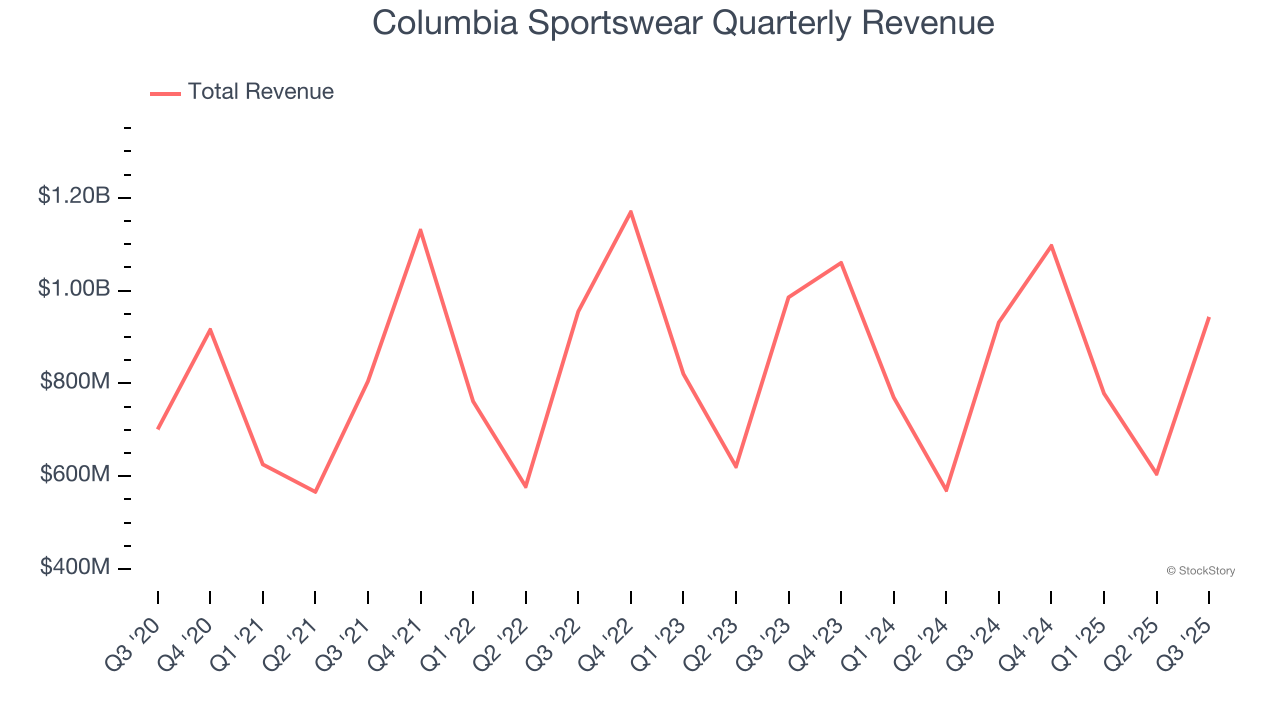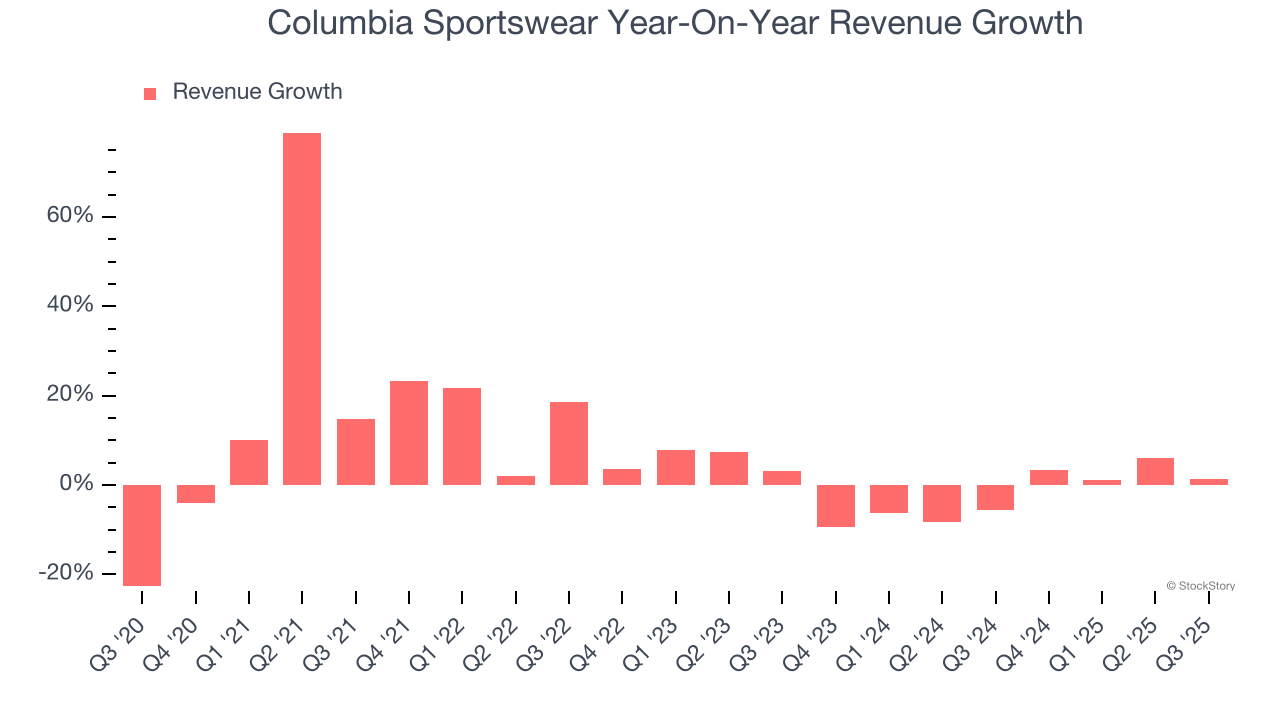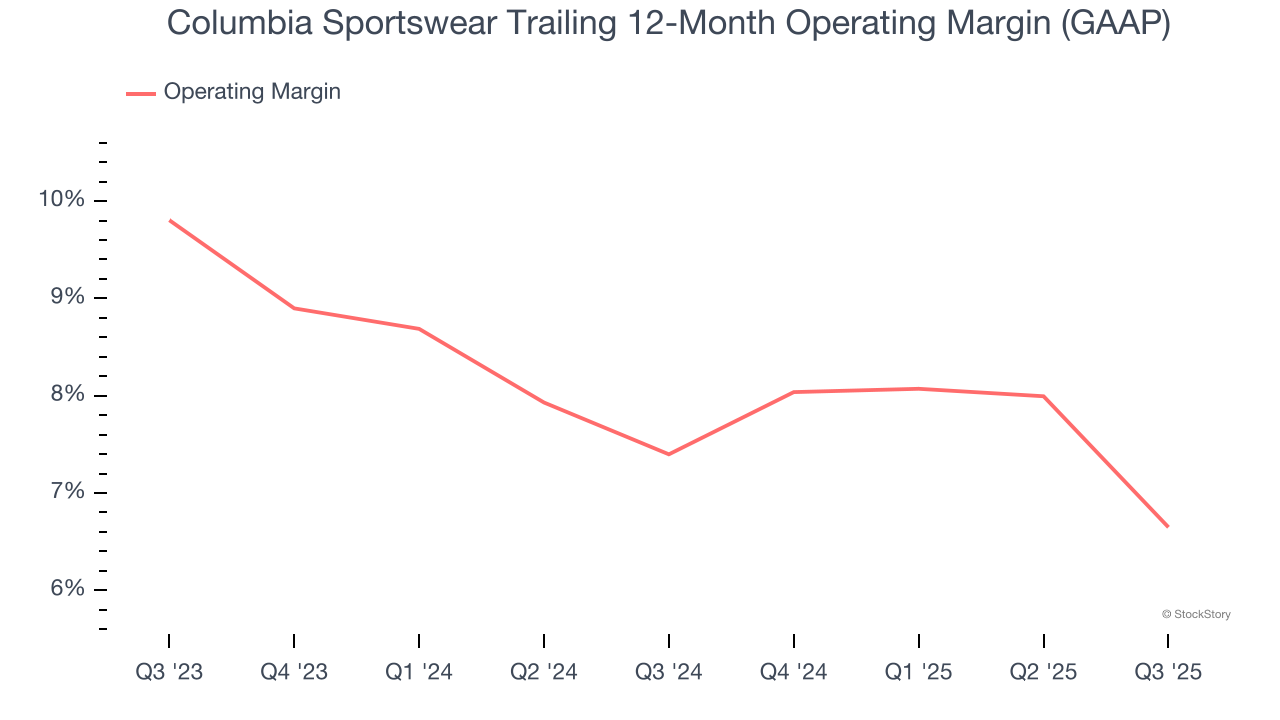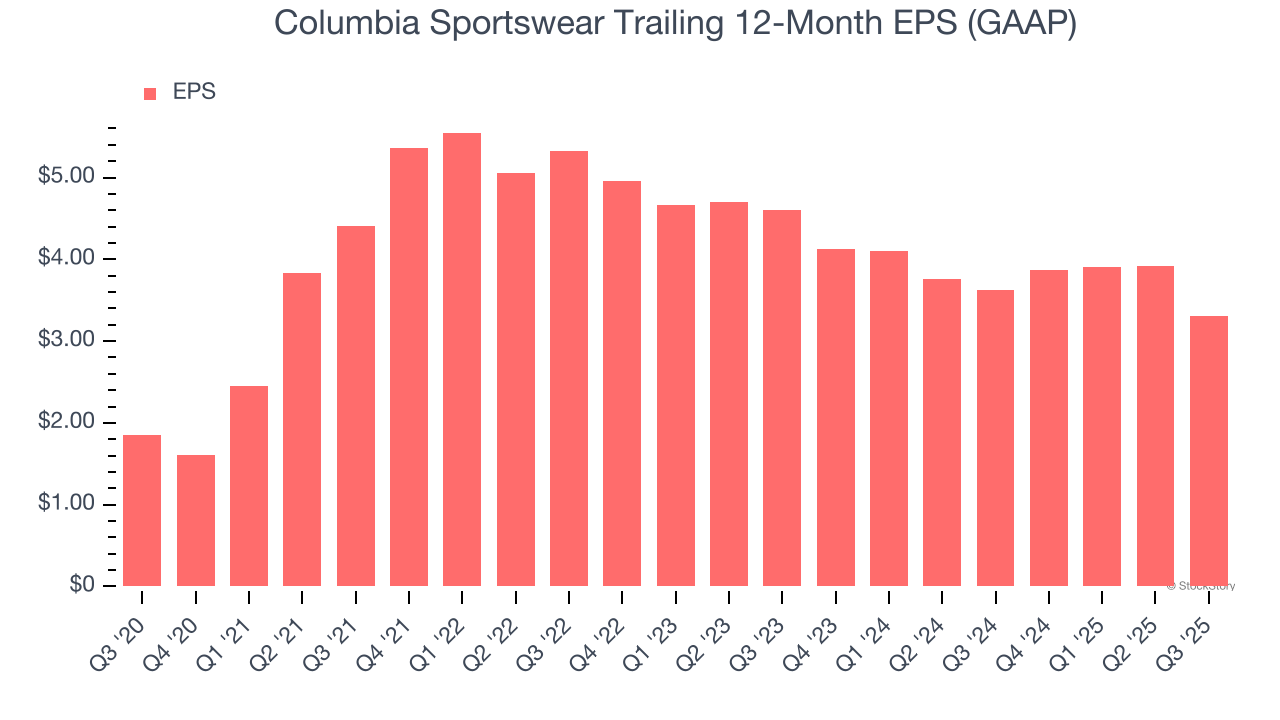
Outerwear manufacturer Columbia Sportswear (NASDAQ: COLM) reported revenue ahead of Wall Streets expectations in Q3 CY2025, with sales up 1.3% year on year to $943.4 million. On the other hand, next quarter’s revenue guidance of $1.02 billion was less impressive, coming in 4.1% below analysts’ estimates. Its GAAP profit of $0.95 per share was 19.5% below analysts’ consensus estimates.
Is now the time to buy Columbia Sportswear? Find out by accessing our full research report, it’s free for active Edge members.
Columbia Sportswear (COLM) Q3 CY2025 Highlights:
- Revenue: $943.4 million vs analyst estimates of $918.7 million (1.3% year-on-year growth, 2.7% beat)
- EPS (GAAP): $0.95 vs analyst expectations of $1.18 (19.5% miss)
- Adjusted EBITDA: $81.6 million vs analyst estimates of $110.6 million (8.6% margin, 26.2% miss)
- Revenue Guidance for Q4 CY2025 is $1.02 billion at the midpoint, below analyst estimates of $1.07 billion
- EPS (GAAP) guidance for the full year is $2.70 at the midpoint, missing analyst estimates by 15.7%
- Operating Margin: 7.1%, down from 12.1% in the same quarter last year
- Free Cash Flow was -$317.2 million compared to -$199.4 million in the same quarter last year
- Market Capitalization: $2.85 billion
Chairman, President and Chief Executive Officer Tim Boyle commented, “Third quarter results reflect sustained momentum in our international business, led by double-digit percent sales growth in our Europe-direct markets. This strong international performance underscores the Columbia brand’s ability to connect with younger and more active consumers, a key tenet of our ACCELERATE Growth Strategy.
Company Overview
Originally founded as a hat store in 1938, Columbia Sportswear (NASDAQ: COLM) is a manufacturer of outerwear, sportswear, and footwear designed for outdoor enthusiasts.
Revenue Growth
A company’s long-term sales performance is one signal of its overall quality. Any business can put up a good quarter or two, but many enduring ones grow for years. Regrettably, Columbia Sportswear’s sales grew at a sluggish 6.1% compounded annual growth rate over the last five years. This was below our standard for the consumer discretionary sector and is a poor baseline for our analysis.

Long-term growth is the most important, but within consumer discretionary, product cycles are short and revenue can be hit-driven due to rapidly changing trends and consumer preferences. Columbia Sportswear’s performance shows it grew in the past but relinquished its gains over the last two years, as its revenue fell by 2.4% annually. 
This quarter, Columbia Sportswear reported modest year-on-year revenue growth of 1.3% but beat Wall Street’s estimates by 2.7%. Company management is currently guiding for a 6.6% year-on-year decline in sales next quarter.
Looking further ahead, sell-side analysts expect revenue to remain flat over the next 12 months. While this projection suggests its newer products and services will spur better top-line performance, it is still below average for the sector.
Today’s young investors won’t have read the timeless lessons in Gorilla Game: Picking Winners In High Technology because it was written more than 20 years ago when Microsoft and Apple were first establishing their supremacy. But if we apply the same principles, then enterprise software stocks leveraging their own generative AI capabilities may well be the Gorillas of the future. So, in that spirit, we are excited to present our Special Free Report on a profitable, fast-growing enterprise software stock that is already riding the automation wave and looking to catch the generative AI next.
Operating Margin
Operating margin is an important measure of profitability as it shows the portion of revenue left after accounting for all core expenses – everything from the cost of goods sold to advertising and wages. It’s also useful for comparing profitability across companies with different levels of debt and tax rates because it excludes interest and taxes.
Columbia Sportswear’s operating margin might fluctuated slightly over the last 12 months but has remained more or less the same, averaging 7% over the last two years. This profitability was paltry for a consumer discretionary business and caused by its suboptimal cost structure.

This quarter, Columbia Sportswear generated an operating margin profit margin of 7.1%, down 4.9 percentage points year on year. This contraction shows it was less efficient because its expenses grew faster than its revenue.
Earnings Per Share
We track the long-term change in earnings per share (EPS) for the same reason as long-term revenue growth. Compared to revenue, however, EPS highlights whether a company’s growth is profitable.
Columbia Sportswear’s EPS grew at a decent 12.4% compounded annual growth rate over the last five years, higher than its 6.1% annualized revenue growth. However, this alone doesn’t tell us much about its business quality because its operating margin didn’t improve.

In Q3, Columbia Sportswear reported EPS of $0.95, down from $1.56 in the same quarter last year. This print missed analysts’ estimates, but we care more about long-term EPS growth than short-term movements. Over the next 12 months, Wall Street expects Columbia Sportswear’s full-year EPS of $3.31 to shrink by 16.1%.
Key Takeaways from Columbia Sportswear’s Q3 Results
It was encouraging to see Columbia Sportswear beat analysts’ revenue expectations this quarter. On the other hand, its full-year EPS guidance missed and its EBITDA fell short of Wall Street’s estimates. Overall, this quarter could have been better. The stock traded down 5.7% to $48.54 immediately following the results.
Columbia Sportswear’s latest earnings report disappointed. One quarter doesn’t define a company’s quality, so let’s explore whether the stock is a buy at the current price. The latest quarter does matter, but not nearly as much as longer-term fundamentals and valuation, when deciding if the stock is a buy. We cover that in our actionable full research report which you can read here, it’s free for active Edge members.








